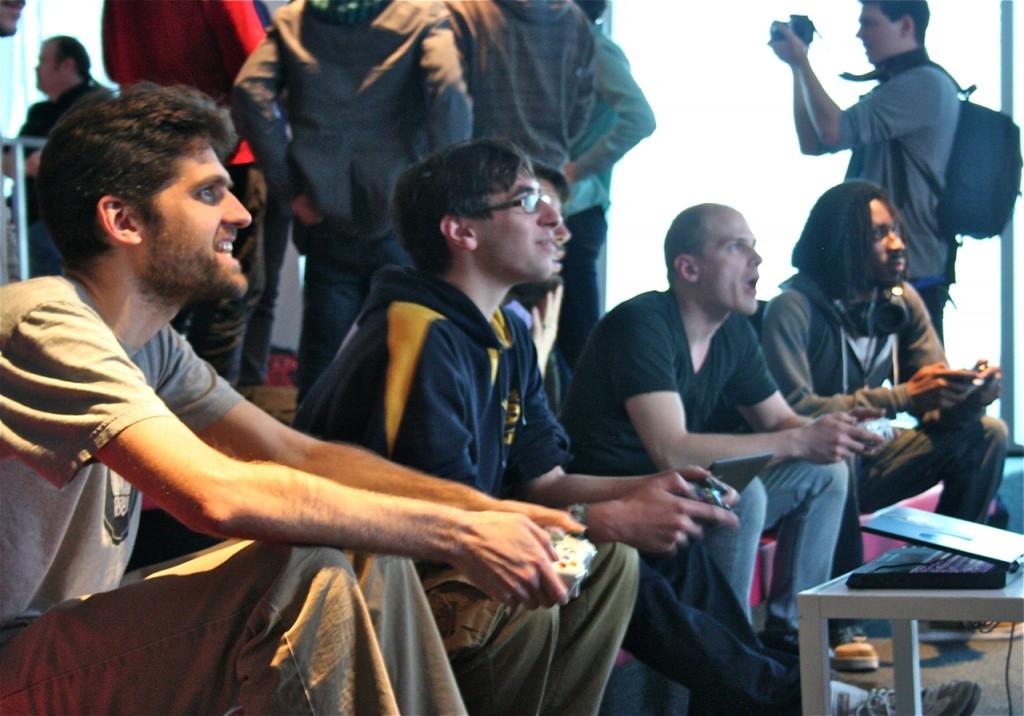Indie Gaming on the Rise
March 20, 2013

Jonathan Xikis roams the bustling crowd at IndieCade East, a games festival held at the Museum of the Moving Image in Astoria, Queens this past February looking to circulate a few business cards. He graduated from Fordham College at Lincoln Center (FCLC) in May 2012 with a degree in English, and, along with some freelance writing gigs, he’s putting it to use writing a script for his own independently-produced video game. He is one of several other indie developers at the three-day festival looking to network and discuss the business.
“The game is called Icebound, and it’s a visual novel, which is a story-heavy ‘choose your own adventure’ type game…. It takes place in a dark fantasy world, deep in an ice age, and you’re a wandering alchemist who has to compete against three others to receive a valuable prize. It has a bit of everything: action, romance, and mystery.” Jonathan hopes to have his game out on Steam, the popular online game distribution and storage program, by May 2013.
You may not be entirely aware of it, but if you own a smartphone, the chances are you’re an indie gamer. Temple Run? Indie game. And Angry Birds? Prior to 2011, Rovio Games was just a group of Swedish programmers. Indie gaming has boomed in the past five years with the advent of the iOS and Droid markets, computer game distribution software like Steam, and online game console markets such as the Playstation Network and the Xbox Live Arcade, all services that have made it easier for consumers to find games with less of a marketing push behind them. And as the indie market expands, more and more younger developers, like Jonathan, are looking to jump in.
“I had a background in film,” says Rusty Moyher, a Texan game developer, “but it’s very hard to make it in indie film; you need a crew, and that’s a lot of money. Everything takes longer. It’s hard to really ‘practice’ and get good at it because it’s such a process. With indie games it’s been completely different. It’s a lot faster.” Rusty develops games for iOS, such as BLOOP, a four-player iPad game in which the object is to tap the colored square assigned to your corner of the screen more than your opponents. The squares periodically multiply and swap positions with each tap; each match eventually becomes a tangle of frenzied fingers as players resort to whatever tactics necessary to tap more squares than their opponents.
Small online communities supporting the more creative capabilities of gaming have grown steadily over the past decade, and similar communities are developing within the postgraduate population, as well as academic institutions. A game-making competition at IndieCade included game and design students from New York University and Parsons the New School of Design, while academics, journalists, and game developers held panels discussing the unique ways in which games can be used as news media, educational curricula, community builders, and even marriage counsels.
As the definition and potential of games continues to morph, smaller developers find themselves at odds with triple A blockbusters. “We define success with [our game] as making our investment back, and making enough money to make another game,” says Jennifer Schneidereit, a United Kingdom-based German developer. “We don’t want to say, ‘we want to sell as many games as possible.’ We just want to sell enough to be sustainable–and on a three-person team, that’s obviously not as many copies as, for example, something like Halo 4, which needs to sell an insane amount to make its investment back.”
Her small multinational team’s iPad game, Tengami, is a delicately-paced puzzle game that guides its players into a ruminative state as they wander a minimal, yet vibrant world influenced by Japanese silkscreen art. Players interact with the environment as though it were a pop-up book, pulling paper slips to move objects, folding and unfolding bits of foliage and architecture.
“We are making a game that is important to us. And we believe that there are enough people out there like us who will see it the same way, and who will really want to play Tengami…. If three people–one from Germany, one from the US, and one from Japan–really love this game, why shouldn’t it reach people all over the world? We do as much PR as possible so that we can find these people.”
The same holds true for those simply looking to break into the industry, according to Jonathan: “I haven’t really started promoting my game yet in earnest, but I’ve found that it’s not hard to promote a game on websites or social media, if you have something interesting and unique to show off.”
But like any other industry today, it’s simply a matter of consistent hard work. “I did fear I had to abandon the project at certain points, in order to keep my grades up or having to get a job and make more money. The only thing that’s kept me going is sheer, unadulterated passion.”









